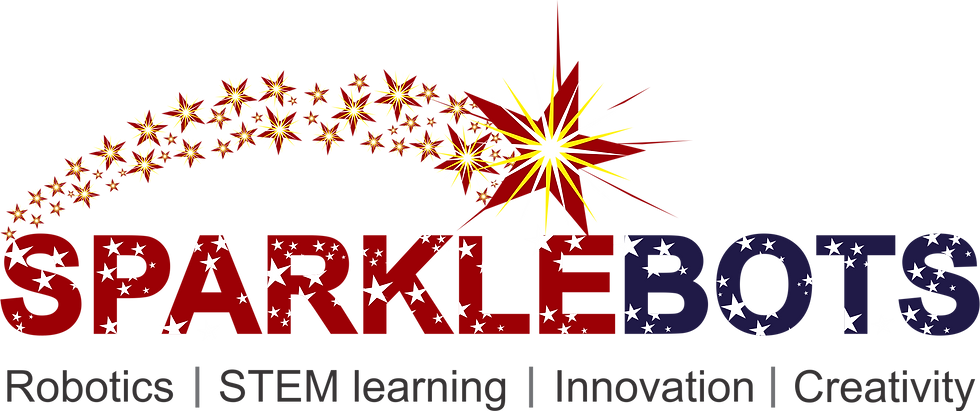Exploring the Uncharted Territory: Adapting STEM Education to Digital Trends for the Next Generation
- Vinay Kunwar
- Jan 25
- 4 min read
As we enter a new era of technology, it's clear that traditional education must evolve, especially in the fields of Science, Technology, Engineering, and Mathematics (STEM). The rise of digital education presents countless opportunities for innovative teaching methods and enriching learning experiences. In this blog post, we will explore how digital trends are reshaping STEM learning and what parents and students can expect in this dynamic landscape.
The Rise of Digital Tools in STEM Education
The integration of digital tools in STEM education is more important than ever. Technology allows complex subjects such as robotics, mathematics, and science to be taught in engaging, hands-on ways. For example, consider platforms like Robotics for Kids, which provide interactive classes where young learners can build their own robots and write basic code. These experiences make learning fun and memorable.
Additionally, virtual labs and online resources are now widely available, giving students the chance to conduct experiments that mimic real-world scenarios. Reports indicate that students using digital tools improve their understanding of concepts by 30% compared to those who rely solely on traditional learning. This means that digital resources not only enhance education but also cater to the diverse learning preferences of students.

The Importance of Hands-On Learning
Hands-on learning is vital in STEM education, especially in fields like robotics. Programs such as Sparklebots offer children the chance to work with real components, helping them grasp complex ideas like programming logic and mechanical engineering.
Research shows that students who participate in hands-on programs develop critical thinking and problem-solving skills. For instance, 90% of participants in robotics for children programs reported increased confidence in their ability to tackle challenges. By collaborating and communicating with peers during these activities, kids also enhance their social skills and creativity.
Online Learning Platforms: A Complete Resource
The transition to online learning has provided a unique opportunity to enrich STEM education. Various platforms enable students to dive into different STEM fields through project-based learning, online courses, and virtual mentorship. Parents seeking “robotics classes near me” can now find virtual options that make quality education accessible regardless of location.
In online environments, students can engage with instructors and classmates from diverse backgrounds. This exposure broadens their understanding of global challenges in STEM fields, preparing them to think critically about real-world issues. Reports suggest that online learning can enhance student engagement by up to 50%, making it a powerful tool for education.

The Role of Gamification
Gamification significantly impacts STEM education by incorporating game design elements into learning experiences. Programs that utilize gamification attract students and encourage active participation. For example, students might engage in challenges where they program robots to complete tasks, blending play with education.
Studies show that gamified learning can improve retention rates by 60%, turning what could be a tedious subject into a fun and engaging experience. This approach captures students' attention, motivating them to explore STEM subjects more deeply.
Preparing for a Career in Robotics
The rapid growth of STEM fields, particularly robotics, opens numerous career opportunities. Schools and educational platforms are increasingly focusing on equipping students with relevant skills. Early exposure to robotics not only ignites an interest in technology but paves the way for future educational and career prospects.
For instance, students enrolled in robotics for kids programs often go on to pursue engineering or computer science degrees. Encouraging children to explore these fields early significantly increases their chances of success in an ever-evolving job market, which is projected to grow by 10% over the next decade.

The Role of Educators in Digital Transformation
As education becomes more digital, the role of educators is changing. Teachers must not only have a strong grasp of their subject matter but also know how to effectively use technology to support learning. Ongoing training in digital tools and teaching strategies is essential for educators.
Collaboration among educators, parents, and technology providers will also be crucial for shaping the future of STEM education. By working together, they can create innovative curricula that meet students' evolving needs in a digital world.
Embracing Change in STEM Learning
The future of STEM learning is intertwined with digital trends that encourage interactive, engaging, and hands-on experiences. To nurture a generation of innovative thinkers, parents, students, and educators must adapt to this new landscape. Embracing technology and supporting explorations in areas like robotics will prepare young minds for successful careers in an increasingly digital world.
As we navigate this uncharted territory, let us cultivate curiosity and collaboration within STEM fields. By doing so, we can ensure that future generations are equipped to meet the challenges that lie ahead. With the ever-evolving world of STEM education, staying informed and adaptable is essential. Whether through digital platforms, hands-on activities, or innovative programs, there are exciting possibilities waiting for students eager to learn and explore.




Comments